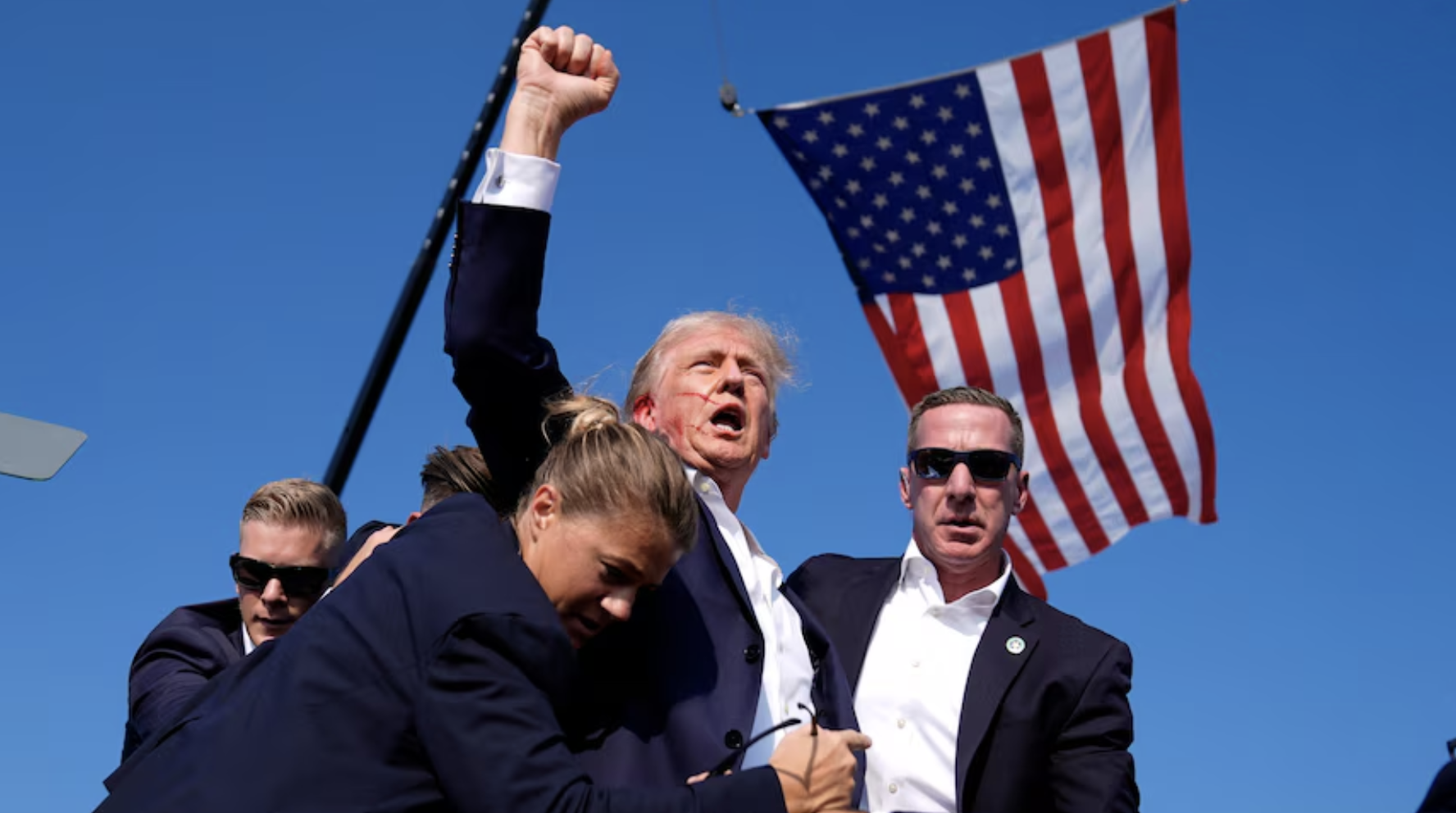Trump’s Success Through the Lens of MBTI: An ESTP in Action

Donald Trump’s ascent to the presidency of the United States was as unconventional as it was unprecedented. A real estate mogul and reality TV star with no prior political experience, Trump defied the odds to win the 2016 election. While many factors contributed to his success, one lens through which to examine his rise is the Myers-Briggs Type Indicator (MBTI), a widely used personality assessment tool. Trump is often classified as an ESTP—Extraverted, Sensing, Thinking, Perceiving. This article explores how the characteristics associated with the ESTP personality type may have played a role in Trump’s success in both business and politics.
Understanding MBTI and the ESTP Personality Type
The Myers-Briggs Type Indicator is based on Carl Jung’s theory of psychological types and categorizes individuals into 16 distinct personality types. Each type is defined by preferences in four dichotomies: Extraversion (E) vs. Introversion (I): Where individuals draw energy from—external interactions or internal reflection. Sensing (S) vs. Intuition (N): How individuals gather information—focusing on concrete realities or abstract possibilities. Thinking (T) vs. Feeling (F): How individuals make decisions—based on logic or values and emotions. Judging (J) vs. Perceiving (P): How individuals deal with the external world—preferring structure or flexibility.
An ESTP, therefore, is someone who prefers extraversion, sensing, thinking, and perceiving. ESTPs are often described as energetic, action-oriented, and pragmatic. They thrive in dynamic environments, enjoy taking risks, and are skilled at navigating complex situations with a focus on immediate results. Known for their charisma and ability to think on their feet, ESTPs are natural problem-solvers who prefer to deal with tangible realities rather than abstract concepts. According to the Myers & Briggs Foundation, ESTPs make up approximately 4-6% of the population, suggesting that while not the most common type, they can still achieve significant success in various fields. Trump’s ESTP Traits and Business Success
In the business world, Trump’s ESTP traits were evident in his approach to real estate and branding. His extraversion allowed him to build a vast network of contacts, from investors to media personalities, which was crucial for securing deals and promoting his brand. This outgoing nature enabled him to negotiate effectively, charm potential partners, and maintain a high public profile, all of which are essential in the competitive world of business.
His sensing preference kept him focused on concrete opportunities and immediate gains. Rather than speculating on long-term trends, Trump prioritized acquiring properties in prime locations or launching ventures that capitalized on current market conditions. This focus on the present moment allowed him to act decisively, taking advantage of opportunities that others might have overlooked.
Trump’s thinking orientation meant he approached negotiations and business decisions with a logical, often ruthless, mindset. He was known for driving hard bargains and prioritizing profit over sentiment, a trait that served him well in the cutthroat world of New York real estate. His decisions were rarely swayed by emotional considerations, which enabled him to make tough calls that others might shy away from.
Additionally, his perceiving nature gave him the flexibility to pivot quickly when opportunities arose or when deals fell through. This adaptability allowed him to stay ahead in a rapidly changing industry, where rigidity can often lead to missed opportunities. For example, Trump’s development of Trump Tower in the 1980s showcased his ability to seize opportunities and negotiate favorable terms. By securing air rights and tax abatements, he turned a challenging project into a symbol of luxury and success. His willingness to take risks, a hallmark of the ESTP type, was also evident in his ventures into casinos and entertainment, even if not all were successful. These traits—extraversion, sensing, thinking, and perceiving—were instrumental in building the Trump brand and establishing his reputation as a dealmaker.
Trump’s ESTP Traits and Political Success
Trump’s entry into politics was marked by the same ESTP characteristics that fueled his business career. His extraversion was on full display during his campaign rallies, where he energized crowds with his unscripted, often provocative speeches. This ability to connect with people directly, bypassing traditional media channels, was a key factor in building his political base. His charisma and larger-than-life personality resonated with voters who were drawn to his energy and straightforward communication style.
His sensing trait allowed him to tap into the immediate concerns of voters, such as economic anxiety and dissatisfaction with the political establishment. By focusing on tangible issues like job creation and immigration, rather than abstract policy debates, Trump resonated with a segment of the electorate that felt overlooked by traditional politicians. His campaign slogans, such as “Make America Great Again,” were simple and direct, appealing to voters who valued practical solutions over nuanced policy discussions.
As a thinking type, Trump approached his campaign with a strategic, albeit unconventional, mindset. He was unafraid to make bold, sometimes controversial, statements that kept him in the headlines, effectively using media attention to his advantage. His decisions were driven by a desire to win, rather than by emotional considerations, which allowed him to maintain a laser focus on his goals. His perceiving preference enabled him to adapt his message on the fly, responding to the mood of the electorate and shifting strategies as needed. This flexibility was particularly evident during the 2016 campaign, where he adjusted his rhetoric to address emerging issues and capitalize on his opponents’ weaknesses.
Once in office, Trump’s ESTP traits continued to shape his presidency. His preference for action over deliberation was evident in his approach to policy-making, often favoring executive orders and quick decisions over lengthy legislative processes. This decisiveness appealed to supporters who valued results over protocol. For instance, his administration’s rapid rollout of tax cuts and deregulation efforts in 2017 was a direct reflection of his action-oriented style. His ability to focus on immediate outcomes, rather than long-term consequences, aligned with the sensing aspect of his personality, which prioritized tangible results over abstract planning.
The Downsides of ESTP Traits in Leadership
However, the same traits that contributed to Trump’s success also led to challenges and criticisms. His extraversion, while charismatic, sometimes manifested as impulsiveness, leading to off-the-cuff remarks that sparked controversy. His tendency to speak without a filter, while appealing to some supporters, often alienated others and created unnecessary distractions. His focus on the present moment, a sensing characteristic, occasionally resulted in short-term solutions that overlooked long-term consequences. For example, his trade policies, such as tariffs on Chinese goods, provided immediate relief to certain industries but strained international relations and raised concerns about global economic stability.
Trump’s thinking preference, while useful for tough decision-making, sometimes came across as lacking empathy. His handling of sensitive issues, such as immigration or public health crises, was often criticized for being insensitive or tone-deaf, which alienated voters who valued Emotional Intelligence in leadership. Additionally, his perceiving nature, though flexible, contributed to a perception of disorganization within his administration. Frequent staff turnover, shifting policy priorities, and a lack of long-term planning were hallmarks of his tenure, which critics argue undermined his effectiveness.
Critics also argue that these aspects of his personality type hindered his ability to build consensus or maintain stability, both domestically and internationally. His approach to foreign policy was often seen as erratic, with abrupt changes in stance that confused allies and adversaries alike. The ESTP’s tendency to prioritize immediate action over careful planning was both a strength and a liability in the complex world of global politics, where long-term strategy and diplomacy are often essential.
Comparing ESTP with Other Personality Types in Leadership
It is worth noting that different personality types might approach leadership differently. For example, an INTJ (Introverted, Intuitive, Thinking, Judging) leader might focus more on long-term strategy and systematic planning, potentially offering more stability but perhaps less adaptability. An ESFJ (Extraverted, Sensing, Feeling, Judging) leader might prioritize harmony and consensus-building, which could foster stronger relationships but might struggle with making unpopular decisions. Trump’s ESTP type, with its emphasis on action, pragmatism, and flexibility, suited his particular brand of leadership, which was disruptive and unconventional. Whether this was beneficial or detrimental depends largely on one’s perspective and values. Interestingly, while ESTPs are not the most common personality type among political leaders—ENTJs and ESTJs are often more represented due to their strategic and organized nature—Trump’s ESTP traits allowed him to break the mold. His ability to disrupt established norms and appeal directly to voters’ immediate concerns set him apart from more traditional candidates. This suggests that, in certain contexts, the ESTP’s adaptability and action-oriented approach can be highly effective, even in arenas typically dominated by other personality types.
In conclusion, Donald Trump’s success in business and politics can be partially attributed to his ESTP personality type. His extraversion, sensing, thinking, and perceiving preferences equipped him with the tools to navigate complex environments, seize opportunities, and connect with people in a way that resonated with his base. His charisma, focus on immediate results, logical decision-making, and adaptability were key factors in his rise to prominence. However, these same traits also contributed to the controversies and challenges that marked his presidency, from impulsiveness and short-term thinking to perceptions of disorganization and insensitivity. Understanding leadership through the lens of personality types like MBTI offers valuable insights into why certain leaders succeed in specific contexts. While personality is just one factor among many, it provides a framework for analyzing the strengths and weaknesses that individuals bring to their roles. In Trump’s case, his ESTP traits were both a boon and a bane, shaping a presidency that was as polarizing as it was impactful. As the political landscape continues to evolve, the role of personality in leadership remains a critical area of study for understanding the dynamics of power and influence.




